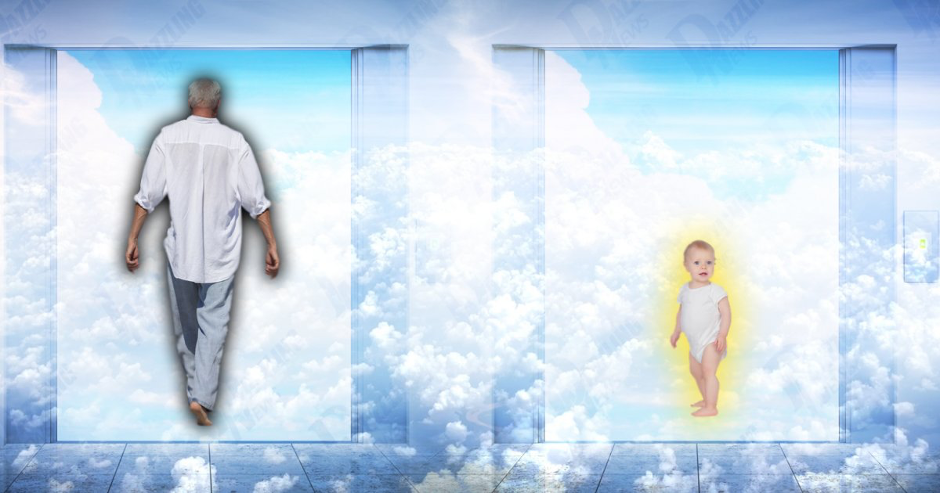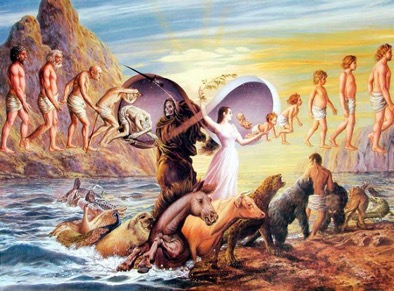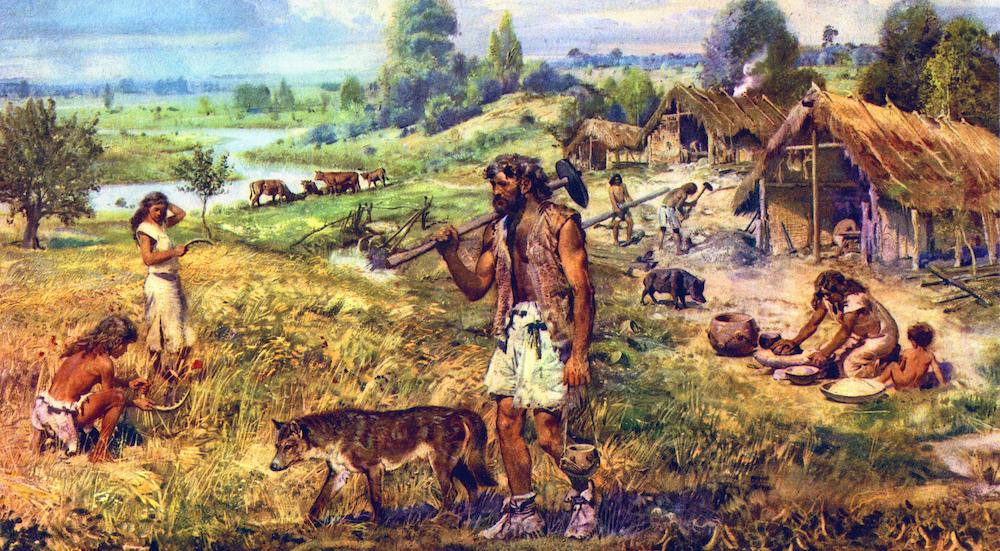- Visitor:46
- Published on:
The Tabligh Movement or Millions of Bearded Militants on the March – 1
In this brilliant expose of Tablighi Jamaat, India’s finest historian Sita Ram Goel proves that Tablighi Jamaat is not a social movement. It has no peaceful intentions and it has no spiritual or philosophical bent. Like all Islamic movements it is also a militant movement, with violent goals and genocidal intentions about the non-Muslim groups at its target, the most visible of the enemies, being the Hindus. In light of this two-part series, the current deeds of Tablighi Jamaat do not constitute outlier behavior, but is symptomatic of the core ideology of Tablighi Jamaat.

The Sarva Panth Samadar Manch is supposed to work for national integration. One wonders, however, if Dattopant Thengdi or any other stalwart of the Sangh Parivar cared to find out who Maulana Wahiduddin Khan was and what he stood for before they invited him to ‘sanctify’ the Samadhi of Dr. Hedgewar by his ‘august’ presence.
‘Maulana Wahiduddin, currently the director of the Islamic Center, Delhi, resigned from a prominent position in the Jammat-i-Islami of India in 1960.’
We shall take up the Jamaat-i-Islami at a later stage in this chapter. We have to take up the Tablighi Jammat first because it prepares the ground for the Jamaat-i-Islami or in other words the Jamaat-i-Islami takes over from where the Tablighi Jamaat leaves.
‘The Tablighi Jamaat of the Indo-Pakistan subcontinent constitutes one of the very few grass roots Islamic movements in the contemporary Muslim world. In 1926 the Jamaat began da’wa work in the limited confines of Mewat near Delhi and consisted of a few dozen disciples of Maulana Mohammad Ilyas (1885-1944). Today the movement claims to have millions throughout the Muslim world and the West. Its 1988 annual conference in Raiwind near Lahore, Pakistan, was attended by more than one million Muslims from over ninety countries of the world. The Raiwind International Conference of the Tablighi Jamaat has now become the second-largest congregation of the Muslim world after hajj.’
‘It was because of his dissatisfaction with the madrasas that Maulana Ilyas resigned from a prestigious teaching position at Mazaharul Uloom Seminary in Saharanpur (Uttar Pradesh) and came to Basti Nizamuddin in the old quarter of Delhi to begin his missionary work. The Tabligh movement was formally launched from this place in 1926. Basti Nizamuddin later became the movement’s international headquarters.’
Ilyas had returned from his second hajj in 1925 when he formalized the movement he had started earlier.
‘Jama’ats come to the markaz [at Nizamuddin] from all over [the world]; ten years ago a five storey building was erected to accommodate foreign jama’ats.’
The first great achievement of the Tablighi Jamaat was the cold-blooded murder of Swami Shraddhananda. The swami had been lionized by Muslims when he supported the Khilafat agitation during the first Non-Cooperation movement (1921-22). ‘But as he was closely associated with the Śuddhi movement a section of Muslims cherished bitter hatred against him. On 23 December 1926, when the Swami after a serious attack of pneumonia was lying in his bed, a Muslim entered into his room on false pretext and stabbed him with a dagger.’
It became well known very soon that the murderer had been hired by the Tablighi Jamaat headquartered at Nizamuddin.
Its latest triumph is recorded by Shail Mayaram in her book on Mewat published in 1997. ‘Around the corner from Basti Nizamuddin is the Masjid Panjpiran, now one of the centers of decision-making for Mewat. Maulvis, politicians, and chaudharis assemble here to discuss critical issues such as the outcome of December 1992 violence in Mewat. There is a growing currency of the word kafir with respect to non-Muslims. A Deobandi ‘alim in Punhana told me in the context of attacks on temples in December 1992 (in retaliation to the demolition of the Babri mosque) that this was an example of the age-old conflict between kufr (unbelief) and eternal Islam. A report on the rioting in Mewat that followed suggests the role of some maulvis in the organization of protest and later damage to temples, in five places. Some Meos explained the mobs, largely comprising young persons, in terms of the Otherness of the Hindu which had been brought about by the work of religious reform.’
The ‘work of religious of reform’ referred to in the above citation means, of course, the work of the Tablighi Jamaat. Wahiduddin Khan has narrated with over brimming enthusiasm the story of how the ‘Otherness of the Hindu’ was ‘brought about’ in Mewat. We have to quote him at some length:
“This great movement generally known as the Tablighi Jama’at has inspired a new fervour, a new zeal to serve the divine cause Its founder surprisingly was a slight, short-statured individual rather unimpressive in personality It was this extraordinary figure known as Maulana Ilyas who founded the Tablighi Jama’at which was to inspire in thousands of people a religious zeal which had been unknown for centuries
“This family traced its descent to the Valliullah family, who had been chosen to by God to rectify the distorted picture of Islam which had resulted from the Taimur family’s wrong attitude to towards religion
“His [Ilays’] father had set up a small religious school [Madrasah] at Basti Hazrat Nizamuddin to impart free education to poor students It was at this place that he [Ilyas] first came into contact with the Mewatis. Distressed by their religious and spiritual poverty, he set himself to reform their condition through religious education
“These uncouth and illiterate people had converted to Islam on a mass scale as a result of the efforts of the well-known sufi Hazrat Nizamuddin Aulia and his descendants, But in practical life they were far from Islam They kept their Hindu names, like Nahar Singh and Bhup Singh; they left a lock of hair [choti] on top of the shaven head as Hindus do; they worshipped idols, celebrated all the Hindu festivals and made sacrifices to the pre-Islamic gods and goddesses They could not even recite the creed of the Muslims [kalimah]. So unfamiliar even was the sight of prayer [namaz], let alone of the saying of it, that if by chance they came across someone praying, they gathered to enjoy the spectacle, assuming that the person must either be mad or suffering from some ailment due to which he was kneeling and prostrating himself again and again Major Piolet, the Bandobast officer of Alwar at the end of the 19th century writes; ‘Meo are half-Hindu in their habits and customs.’
“In 1921 new problems arose when Arya Samaj preachers resolved to reconvert the Indian Muslim to their ancestral religion. Thanks to the religious and cultural poverty of the Meos, the large-scale activities of the Aryan missionaries met with great success. The solution of this problem was to impart to them religious education so that they did not yield to any malign influence.
“When it came to convincing the Mewatis that they should send their children to school, they were tough nuts to crack They ultimately surrendered before his indomitable will, and he succeeded in establishing a number of schools where besides the teaching of the Quran, elementary religious education was also imparted. Work on this pattern continued until another incident occurred which changed the course of his activities. On a visit to Mewat, the Maulana was introduced to a young man who had just completed his education in one of his schools. Much to his astonishment, he saw no traces of Islam in his clean-shaven appearance. He was quick to realize his failure. His aim had not been fulfilled. He had been aware of the problem to some extent before, but now it had become plain for all to see. The schools did serve a purpose, but to the Maulana’s eyes only a secondary one
“As soon as the young people left the school they mingled with company of their own sort, which nullified the school influence altogether. The only solution to this problem, as the Maulana saw it, lay in separating them from their milieu, and it was decided that they should be withdrawn from it in groups for a period of time, and gathered together in mosques or religious institutions away from bad spheres of influence This formula proved the right one, Engaging them in religious activities round the clock for some length of time made them into new human beings. Once the trial proved effective, this pattern was to be followed in future
“Such involvement could not fail to reap dividends: large numbers of people were brought into his fold from various parts of the country to spread the message he entrusted them with. Staying day and night in a religious and spiritual atmosphere indeed worked wonders for them, for when those people returned home after having undergone the training, they were changed people, Far from falling under the bad influence of their surroundings, they sat out to be a good influence on their environment. The Maulana had found the solution to his problem.
“The whole of Mewat was transformed. Great spiritual excitement and enthusiasm could be seen among the people at large. Where previously, mosques had been few and far between, now mosques and religious schools came up in every settlement They changed their way of dressing and grew beards, shaking off one by one almost all their pre-Islamic customs that they had retained after their conversion Not only did they reform themselves but they were also inspired to spread the message of God to those who were as they had been before .”
Ilyas undertook many tours in Mewat after his return from his last hajj in 1938. ‘A dislike for Hinduised garments was created and people began to dress themselves according to the specifications of the Shari’at. Bracelets got removed from the arms and rings from the ears of men ’
The first conference of the Jamaat was held in 1941 at Basti Nizamuddin. It was attended by twenty-five thousand people.
Leadership of the Jamaat passed on to Muhammad Yusuf, the son of Ilyas, after the latter died in 1944. Yusuf intensified and extended the activities of the Jamaat by tours to all major cities in India and also many places abroad. ‘An international network was established which also evoked great interest among teachers and ulama of Arabia, who began coming to Nizamuddin and Deoband, where they too addressed gatherings. A vigorous pan-India and pan-Islamic movement had been constituted.’
Partition in 1947 landed many Meos in refugee camps at Humayun’s Tomb, Purana Qila and several other localities around Nizamuddin. Yusuf sent activists of the Tablighi Jamaat to all camps. ‘The victims were told that their fate was the result of azab (the worst possible punishment administered by God), incurred because they were not good Muslims. They were invited to turn towards God. Some months after Partition, Yusuf visited Pakistan. At a meeting organized by the Jama’at-i-Lahore, he addressed the several hundred thousand refugees from India who had gone to Pakistan, telling them that to avoid khudrishti (fall from Grace) they must follow the path of God, and that alone will save the Muslim world. According to Hasani, the work of Tablighi Jama’ats resulted in a rise of morale among the depressed Mewatis.’
‘To the Maulana,’ observes Wahiduddin Khan, ‘dominance on earth was subject to our leading reformed lives. And he said, ‘Follow the pattern of the Prophet. Those who neither follow the path themselves nor let others follow it, will be shattered by God as He does the shell of an egg No sooner had the people reformed themselves, through the efforts of the Prophet, then God sent His scourge upon the Romans and Persians. Those who did not capitulate before Him perished by His wrath.’‘
Those who want to promote national integration with the help of Wahiduddin Khan, will do well to read his chapter on ‘UMMAN-NESS’ or ‘Islamic Brotherhood’. It carries the ‘text of a speech delivered by Maulana Mohammad Yusuf three days before his death on 30 March 1965, at Rawalpindi, Pakistan’. We are quoting a few key passages:
“The Prophet and his companions took great pains to establish the Ummah (the community of believers) This Ummah was established only after a great sacrifice of the interests of family, party, nation, country, language and so on
“Remember! The words, ‘my nation’ my region, and my people’ all lead to disunity, and God disapproves of this more than anything else.
“It is incumbent upon us to remain united whatever the cost. The Prophet is reported to have said: ‘On the day of Judgement, a certain person would be brought before God to be judged, and although he had performed all forms of worship in the world, he would stand condemned. He would wonder what it was that he was being punished for. He would be told that it was due to such words of his as had caused friction in the Ummah that he had been brought to this state. Afterwards another person would be brought, who had worshipped God far less in comparison to the former person. But he would be amply rewarded. In astonishment he would ask; ‘For which of my deeds have I been rewarded so generously.’ He would be told that on some occasion he had done something or spoken some words, which had helped to bring the community together, and that it was his good words that had brought him all the reward.
“The collective community of Islam should be supreme over groups or nations . The enforcement of Muslim Brotherhood is the greatest social ideal of Islam. On it was based the Prophet’s sermon on his last pilgrimage, and Islam cannot be completely realized unless this ideal is achieved.”
Patrons of Wahiduddin Khan in the Sangh Parivar should also note the thrill which the Maulana experienced when he first reached Basti Nizamuddin to join the Tablighi Jamaat:
“It was August 14, 1966. At 10 O’clock in the morning we arrived at our destination – Bangla Wali Masjid situated near the tomb of Nizamuddin Aulia. This mosque has been famous as the center of reform movement for decades Today it has become the center of a world movement. We can liken this center to the heart. Just as the blood circulates from the heart throughout the body, then returns to the same place, so do the people going out from this place come back to it to recharge themselves spiritually so that they may continue their journey onwards with renewed vigor
“The Chief (Emir) prayed, to which others said Amen After the prayer, the dispatching of missionary groups was attended to The names of those who were undertaking the journey were called out one by one, and each in turn came up to the chief to shake hands with him and receive his blessing before he departed. Such a poignant scene evoked memories of the Prophet sitting in the Masjid-i-Nabawi, exhorting people and sending them in groups to propagate the message to those who were ignorant .”
Those who have not read the orthodox biographies of the Prophet will not suspect how despicably dishonest Wahiduddin can be. The Prophet is not known to have sent a single group of missionaries believing in methods of peaceful persuasion. What he had sent instead were military expeditions forcing one Arab tribe after another to embrace Islam at the point of the sword. Those who offered resistance were massacred, their properties were plundered, and their women and children were captured for being sold as slaves. Circumstances have changed but the intention remains the same. The Tabligh movement’s main aim is to prepare Muslims everywhere for taking up arms when the moment is ripe.
“According to Metcalf, the model of early Muslim jihad is implicit. The amir suggests military/political leadership rather than an intellectual or spiritual one, and the tours of the jama’at are called gasht (patrols).”
We are often told by spokesmen of the Sangh Parivar that they are not opposed to Islam as such but to Islamic Fundamentalism. We do not accept the distinction because Islam by its very nature is Fundamentalist. But even if a distinction can be drawn, we wonder why they refuse to read what Wahiduddin Khan has himself written in so many words, and identify him as an Islamic Fundamentalist sui generis. His mild manners and pretended humility should deceive no one. In fact, he is far more vicious than the traditional or conservative Islamic Fundamentalist. The traditional Islamic Fundamentalist is never dishonest in his presentation of his faith. He never tries the tricks which modernist Muslim apologists like Rafiq Zakaria or Ashghar Ali Engineer have learnt from the Christian missionaries in order to conceal the real face of Islam. But Wahiduddin has gone a step further. He has evolved a double-speak – one for his die-hard co-religionists, and another for his Hindu dupes like K.R. Malkani, Nana Deshmukh, and Dattopant Thengdi. He is thus a doubly distilled poison.
- 23 min read
- 0
- 0










